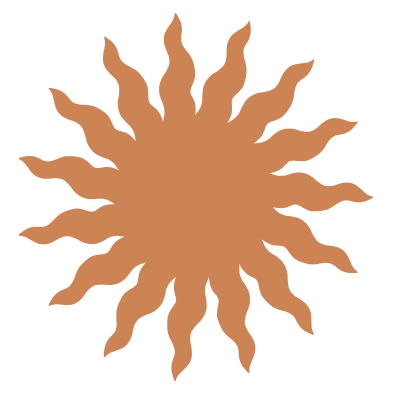
Our ANIMALS
The animals at Hestia Field are an integral part in all that we do.
Creating a self-sustaining ecosystem requires biodiversity – and our sheep, cows, and burros bring just that (along with a few other things!). By choosing animals that graze, Hestia Field is able to strengthen our pastures by ensuring that root systems stay in the ground to feed the soil microbes. Additionally, our animals choose to eat different things and in turn cycle different nutrients through their systems. As we utilize these nutrients in our compost, all parts of our land and soil are well-fed.
And now, meet the animals who call Hestia Field home!
The SHEEP
The sheep at Hestia Field are a familiar sight to many in our neighborhood.
Torbin, our Finnish Landrace, and Lily and Ivy, our Babydoll Southdowns, have had a presence at Hestia Field for almost ten years. We increased our flock in 2020 with the arrival of four CVM sheep from Texas: Clownie, Wheezie, Abby, and Swirl. After the lambing season in 2021, we were excited to welcome Esther and Clove to the mix. Between these nine sheep, there’s a lot of fluffiness and baa-ing to be had in our pastures.
The sheep are sheared yearly, and their wool is cleaned and spun into roving and yarn. We’re proud to offer Hestia Field yarn and roving that is soft, easily workable for different fiber arts, and completely natural.

The Cows
It is not lost on us that the cows at Hestia Field are one of the most popular attractions.
With their prominent horns and shaggy coats, these Scottish Highlands cattle are sometimes mistaken by passerby for yaks. Freya and Goldie were brought from a farm in Buena Vista, CO, to our urban farm, which was quite a change in environment.
These two gals have distinct and undeniable personalities. Freya is a spicy, strong lady who’s always ready to stomp a hoof or toss a horn. Goldie, on the other hand, brings a gentle energy to the field. She captivated our hearts from the beginning and quietly takes in the world from behind her long bangs.
We are thankful for all that our cows bring to Hestia Field and are honored to share our home with them.
Many people have asked us if we have chickens, which leads us to…
Aunt Jane.
Aunt Jane is an adopted burro from the BLM Wild Horse and Burro Adoption Program. The animals from this program are being relocated due to a lack of food and resources to sustain them. It is both detrimental to the animals as well as the ecosystems they are living within. She came to Hestia Field Farm minutes before we were buried under 18” of snow in March of 2021. She was also very pregnant and uninterested in the company of humans. We found she has an affinity for carrots, which she took from our hands swiftly, gobbling them down as she stepped hastily away. Her haunches were hollowed, and she had acquired the name Twiggy in transit to Hestia Field Farm due to her gaunt appearance and poor weight gain.
In our search for a livestock guardian animal, we decided a donkey might be a good fit. We were looking for an animal that might develop some connection to the baby lambs and calves born in the Spring, as well as keep a watchful eye on a flock of chickens preyed upon by hungry foxes and coyotes. This type of animal would add to the tapestry of manures feeding our biological soil inhabitants. Hestia found her burro.
As life on a farm often reveals, we can make plans but rarely does life follow them. It is within this space, where the magic happens.
We were unable to coax much of any trust from her. Pregnant and un-gentled, Janie had zero interest in forming a close bond with any human. We were told to wait until after she foaled, and her demeanor might shift after the new baby arrived. Days turned to weeks turned to months, and it was late July before we saw any sign of a baby. Unbeknownst to us, burros can delay birth until they feel ready. Be it nutrition or safety, it took four months after we thought her baby was imminent for her to bring little Watch into our Circle. He brings us joy and connection, and we are steadily working with Aunt Jane to develop our relationship. Each day we bring her breakfast and dinner, coupled with a handful of carrots. She is offered her treat du jour in exchange for a touch on her nose or scratches, if she allows it. Our work this Spring includes moving her to a smaller space, so that she can become more familiar with us touching her. There is a need to lift her feet to trim her hooves, and to implement some protection on her legs against the pesky biting flies. Beyond these basics, we’d love to get her on a lead to walk the neighborhood and meet our community. As for guarding chickens, it is suspected she might run for the hills if confronted by a fox. Aunt Jane may have other jobs to do here at Hestia Field Farm.







